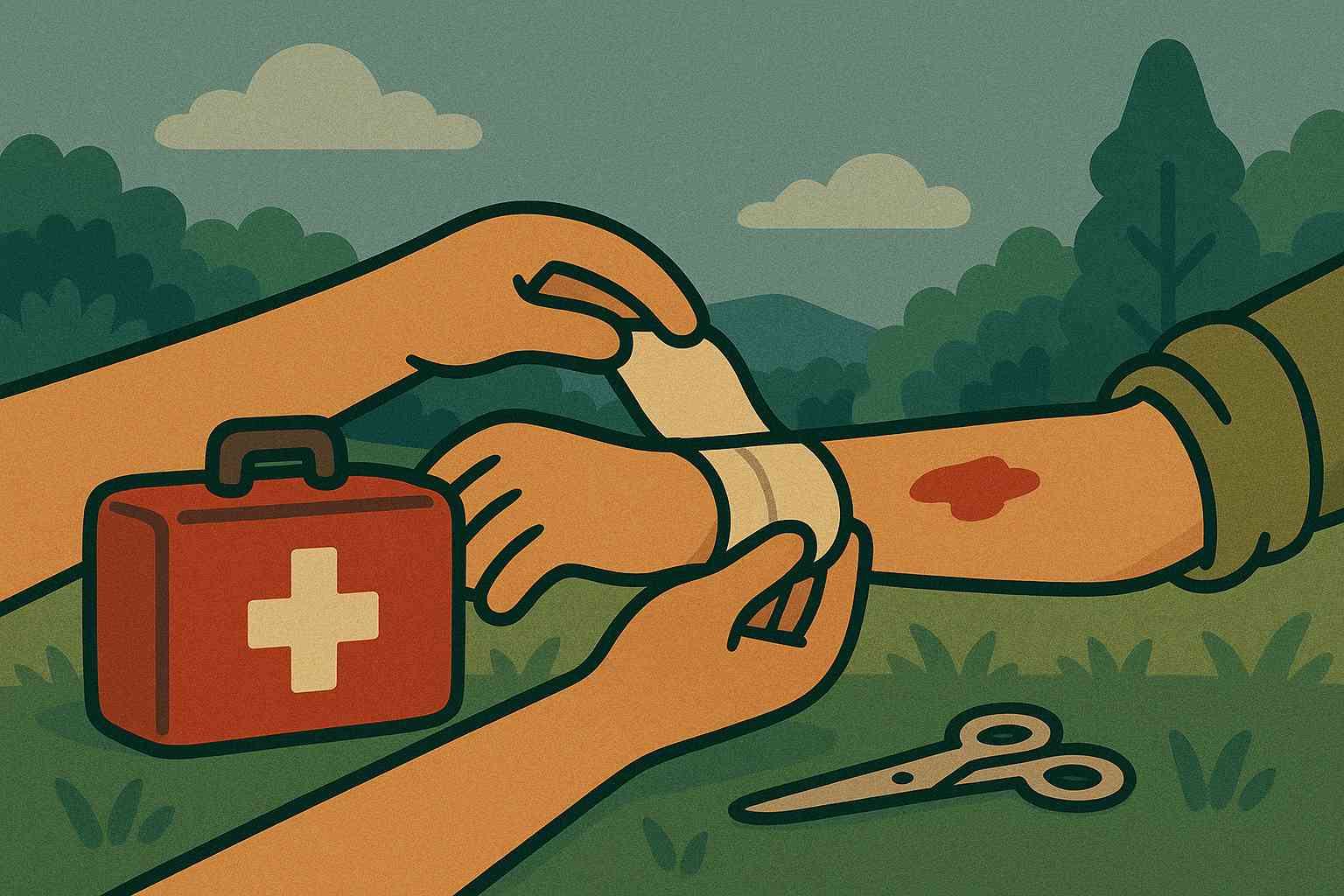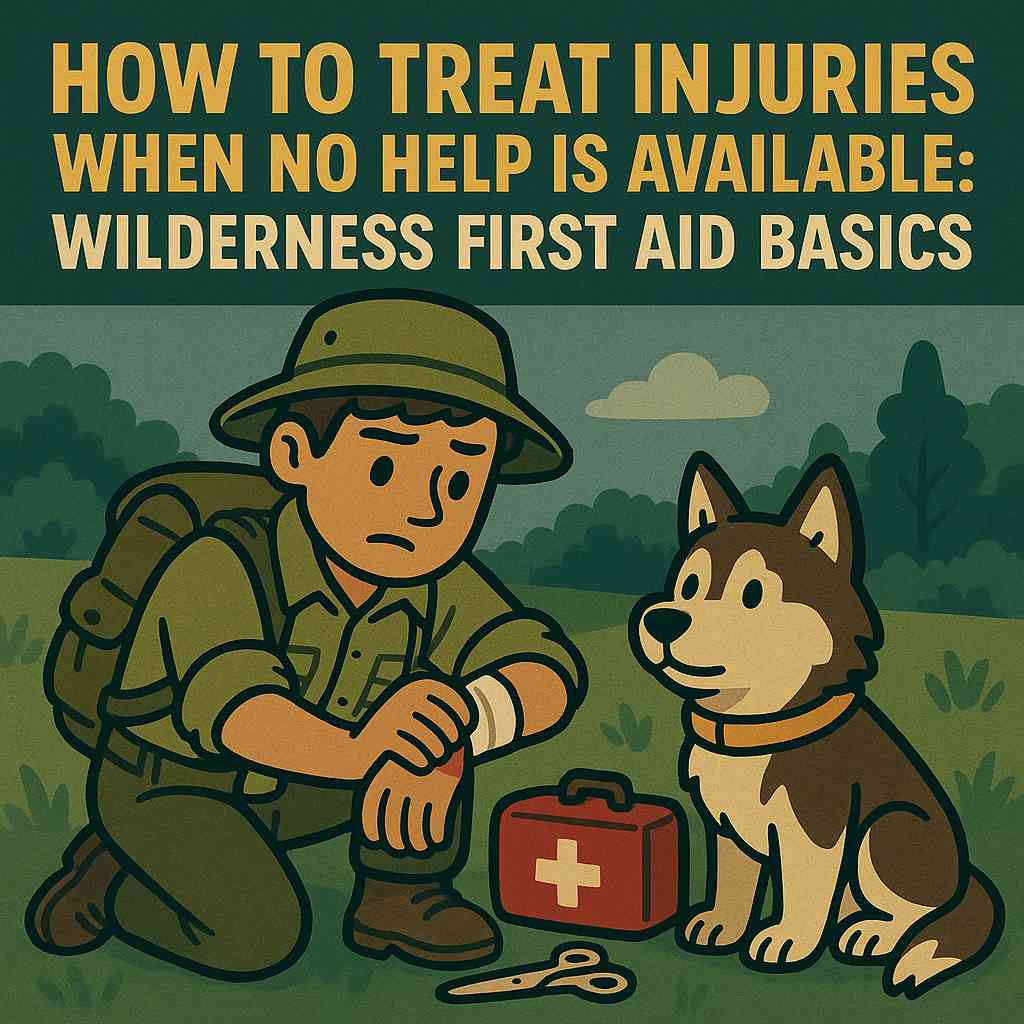When you’re far from civilization, even a small injury can escalate quickly. Imagine you’re hiking alone, miles from the nearest town, and you fall—your ankle twists, your knee bleeds, your heart races. There’s no signal, no one nearby, and no emergency services. In that moment, knowing how to treat yourself isn’t just helpful—it’s vital. Wilderness first aid is the essential skill set that bridges the gap between injury and survival. This guide covers the most critical techniques for handling wounds, pain, and trauma when you’re on your own.
✅ Immediate Response: Assessing the Situation
Before jumping into treatment, you must assess your environment and physical condition. Stop and breathe. Are you bleeding? Is anything broken? Can you move to a safer area? In wilderness first aid, the first priority is scene safety—you can’t treat injuries if you’re in danger from falling rocks, wild animals, or extreme weather. Once safe, perform a quick head-to-toe check. Check for bleeding, swelling, fractures, dizziness, or confusion. Record any symptoms or sensations—memory might fade under stress. Also consider your energy and water levels; dehydration and shock can worsen injuries. Making rational decisions starts with mental clarity.
✅ Bleeding and Wound Management
Severe bleeding is the most immediate threat. Always carry gauze, clean cloth, or bandages in your kit. Apply firm, direct pressure with a clean material to the wound site. If bleeding doesn’t stop, elevate the area (if possible) and apply a second layer—never remove the original bandage. For deep cuts, butterfly strips or duct tape can help close the wound. In the wild, you can use clean T-shirts, sanitary pads, or even moss (if no other options). Clean the wound with filtered water or alcohol wipes. Do not use untreated water, as it may cause infection. Once covered, monitor the area every 12 hours and look for swelling, discoloration, or pus.

✅ Treating Sprains, Breaks, and Immobilization
Twisted ankles, broken fingers, or sprained wrists are common injuries in the wild. To manage these, apply the R.I.C.E. method—Rest, Ice (or cold compress), Compression, and Elevation. If something is broken and deformed, immobilize it immediately. Use sticks and cloth to create a splint. Tie above and below the joint, never directly on it. In absence of proper gear, trekking poles, belts, or even rolled-up socks can serve as splints. For ankle or knee injuries, use a bandana or T-shirt to bind the area and limit movement. Take time to stabilize your injury before attempting to walk long distances. If you must move, use a stick as a crutch to reduce strain.
✅ Infection Control and Pain Management
Infections can kill even when the initial injury is minor. Always clean wounds with purified water, antiseptic wipes, or iodine solution if available. Keep them dry and covered. If pus forms, it may indicate an infection—clean again, and let it air for a few hours before covering. Carry broad-spectrum antibiotics in your emergency kit if possible. For pain, use over-the-counter pills like ibuprofen or acetaminophen (store them in a waterproof container). Natural pain relief options include cold compress from river stones or pressure point techniques. In remote situations, reducing inflammation and maintaining hygiene are just as important as stopping pain. A small mistake here could mean big trouble later.
✅ Conclusion
You may never face a true wilderness emergency—but if you do, having even basic knowledge of wilderness first aid can save your life. It’s not about becoming a field medic overnight, but about recognizing danger and taking decisive action. Practice the basics before you need them. Build a kit, study your body, and train your mind to stay calm when it counts. The wild doesn’t wait for help to arrive—and with the right preparation, you won’t need it.
✅ FAQ
Q1. What’s the most important item in a wilderness first aid kit?
A1. Clean gauze or wound dressings. Stopping bleeding and covering injuries properly prevents infection and complications.
Q2. Can I make a splint with natural materials?
A2. Yes. Use sturdy sticks and cloth or tape to immobilize limbs. Just make sure they’re secure but not cutting circulation.
Q3. How do I know if a wound is infected?
A3. Watch for swelling, redness, pus, or increased pain. If fever develops, you must find help or begin strong treatment fast.
Related articles you might find useful:

